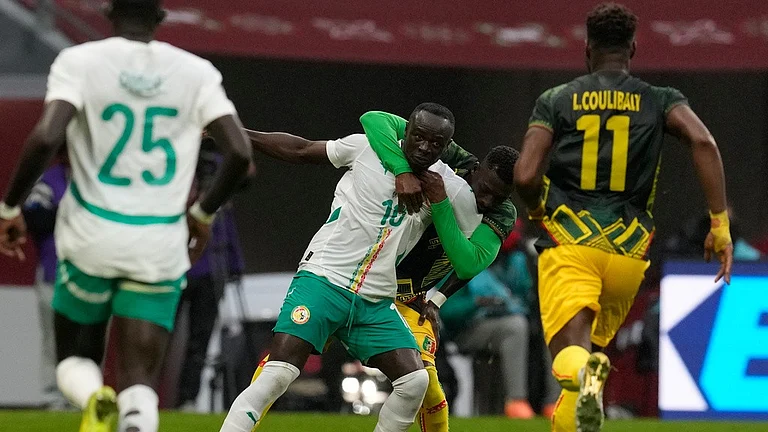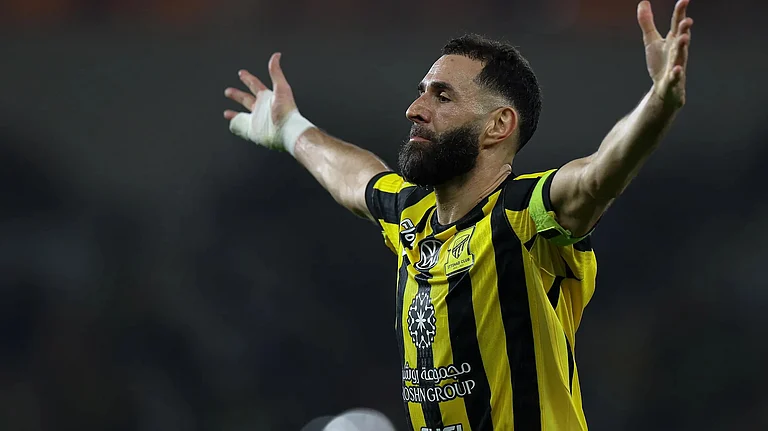And since Pune is in Mumbai's backyard, the Average Mumbaikar (AM) almost never sees the city that was once the proud capital of Peshwa power, the most significant city on the Deccan plateau. AM arrives there too late to buy Shrewsbury biscuits from Kayani's (they're over at some unearthly hour in the morning) and says, "Damn! Next time." AM leaves that evening because you can get back before the last pub closes in Mumbai and thinks as the auto hurtles past the eighth century Pataleshwar temple, "Damn! Next time."
Which is why Pune, Queen of the Deccan is a book you can enjoy even if Pune has always been in your backyard and even if it has not. You can visit the Pataleshwar temple, the Moraya Gosavi Mandir and ghats, the peths and the wadas, the Aga Khan palace, the Camp and never leave your seat on the Deccan Queen.
For Pune was an interesting city, cursed with an interesting life, visited by plagues, wars, conquerors, floods and famines. It is an interesting city, as the two authors point out, with the old jostling the new, the wood-framed wada trying to hold itself aloof from the high-rise.
Aloof, that very word tolls like a bell. The Pune of my memory is aloof. It has nothing to do with the rollicking Poona Camp Farrukh Dhondy recorded, with its cast of picaresque characters. My Pune is different. That Pune has to do with shopkeepers who look like they are doing you a favour because they are serving you. It has to do with friends from Pune, quiet people who wore their Brahminism with a faint deprecatory shrug but with a certain pride in their cool onyx eyes. It has to do with the cold clean symmetries of the Inter University Centre for Astronomy and Astrophysics with its Newtonian apple tree. It has to do with that wada, not really attractive except to students of vernacular architecture (or is that a politically incorrect term now?), but which managed to impress you with its determined individuality, its stubborn refusal to give way to the new.
Pune, Queen of the Deccan has none of this in there. Diddee and Gupta would probably accuse me of cliches and they may well be right. My excuse is that unless you spend a lifetime in a city, you can rarely go beyond the cliches. The authors have done a splendid job on the city, an affectionate job, and despite their disclaimers in the introduction, a thorough, complete one. They are severe where severity is called for, sneering effectively at new cubist high-rises and pseudo-site-specificity. This is a good book and an absorbing read.
My only problem with the book is that it uses only black-and-white pictures. I can hear the squawks of protest already. Monochrome has a kind of moral high ground right now. It is better, more atmospheric, more artistic, less demeaningly colourful. It also lies. It lies about Indian cities all the time. It turns them into cool sophisticated places, with deep shadows and clean lines. No Indian city is like that. Pune, like all the other smaller cities of India, runs riot in screaming colour. The authors have hinted at this. In the caption to the picture of the Kasba Ganpati temple, for instance, they suggest that "...the modern-day signboard seems to be an unnecessarily loud proclamation for such a well-known landmark!"
It is. But that is how Indian cities are. And black-and-white pictures can only perform only so much alchemy, can only transform so much dross into cool grey gold. After that, the city will poke through. It has. Pune would. That's the Pune I know.


























